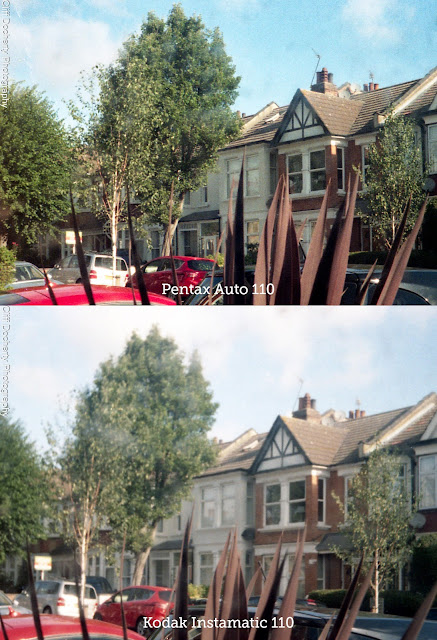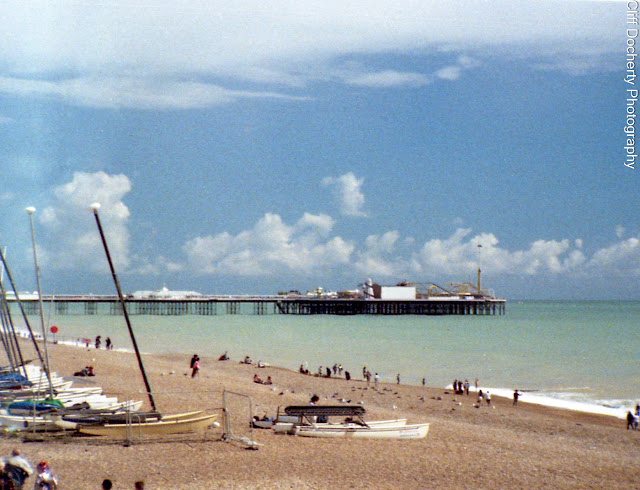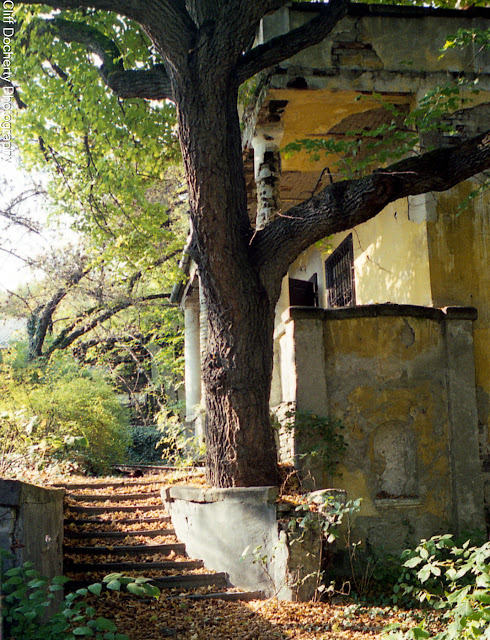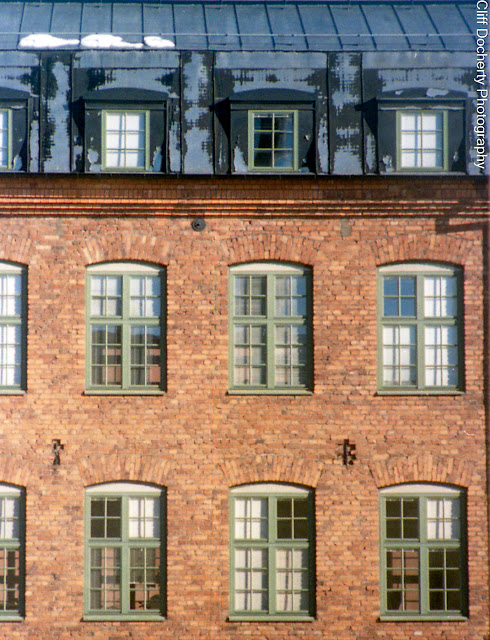"It's not very big", he said, doubtfully. "I can't imagine anyone being satisfied with that."
Oh dear.
Destroyed.
A lifetime of therapy follows.
But it can't have been that bad because just two years later the designer brought out a follow up model which was exactly the same dimensions but with a few added extras under the hood.
We are of course talking about the Pentax Auto 110, the world's smallest SLR camera, complete with a range of interchangeable lenses and filters, and just a fraction of normal size. The disparaging comments came from my boss at the time, the manager of the camera store I worked in on leaving school in 1979. The Auto 110 came in a complete kit and sold in two variants at £99 and £129 depending on how many accessories you wanted. Allowing for inflation, that's £465 and £600 in today's prices, so we're talking a pretty hefty outlay for something that took miniature instamatic film, with all the limitations of size and grain that came with it. The same money would have bought you a state of the art Canon or Nikon with the far superior 35mm format, or indeed a 35mm Pentax with its widely available PK lens mount.
Nevertheless it was sexy. Damn sexy. All those curves and the way it nestled in the palm of your hand like a sleeping dormouse. It was certainly a talking point and it did everything its big brothers did except it slipped into your pocket the way today's phones do, so in many ways it was revolutionary. It predicted a need we didn't know we had for being able to always carry around a camera to capture everything, and capture it well. Except, of course, 110 film. It was still ubiquitous in those days. Plenty of pocket instamatics in drawers filled the appetite for the film format but already the big manufacturers were nibbling at the heels of Kodak and Agfa and Halina, making affordable 35mm pocket cameras with fixed focus that were easy to use and these would soon supplant the 110 format. Canon in particular were about to revolutionise the market with their Sureshot range of early autofocus cameras but that was still a few years away so for a while Pentax had a window and the camera achieved both a cult and luxe status. And I wanted one. Badly.
Well that wasn't going to happen. In 1979 I earned £29 a week (or £135 in today's terms). I was under 18 and we didn't have things like minimum wage and the rest, so all I could do was dream. Over the years interest waned and production of 110 film stopped and the value of 110 cameras plummeted. I saw my chance about 10 years ago and bought one of these cameras and gradually built up the lens and filter collection via some eBay wins then, to my surprise, film went back into production. We were in business!
The first thing I did was run a few frames through an old Kodak instamatic and then pop the cartridge into the Pentax and repeat the frames. The results were staggering. Despite the (severe) limitations of the small film size the images from the Pentax were clearly vastly superior with much more detail, contrast and sharpness despite being shot through a bedroom window. The optics then, were no slouch.
With four prime lenses ranging from a tiny wide angle thing that you could lose in your pocket to a heavy telephoto, Pentax later added a handy zoom lens which added the convenience of not needing to change lenses all the time, although the top end of the zoom was less powerful than the longest of the telephoto primes. This was nevertheless a handy invention because, tediously, the small size while a) cute and b) practical also meant that changing primes that were much smaller than normal was a) tedious and b) impractical. They weighed nothing, were easy to drop and the rear lens covers refused steadfastly to stay on. So a zoom was the answer. I duly bid for and won this rare beast and off I went, ready to capture the world in miniature.
Now the web is full of stories of Lomography's 110 film and its tendency to randomly sow yellow spots on your photos. Some people like it and its the joy of analogue and all that. Personally it irritates the hell out of me. Its poor quality control and down to the uneven thickness of the backing paper used in the film cartridge. In places the paper is thinner and therefore light porous so what you see is leaks through the window that tells you your frame number. You can solve the issue by covering the window with something like black PVC tape and remembering its two flicks of the winding mechanism between frames before you stop so that you don't force the spring. I use this technique on some of my older cameras that use the red window technique for frame counting. Back in the day films were much slower and therefore less light sensitive, and black and white films were not red sensitive, hence the window being red.
So some years down the line the little camera, what was my dream purchase as a teenage camera salesman, has been all over the world with me. Is it my main camera, no, never. Is it fun, absolutely. Is it sexy, well no, probably not. I've matured somewhat. Is it still small? Well yes and its definitely satisfied me 😏
You can, of course, do anything with these cameras that you can do with any decent quality mid-level analogue SLR. It has a good metering system, excellent optics. You're limited to auto exposure but is there even room on it for any controls to give you manual or program options? I've had some really good results, a few of which appear below. I suppose, hand on heart, they would have been better on a regular sized film, but they wouldn't have been half so much fun.
Sunset on the Bosphorus, Istanbul


%20(11)-Edit.jpg)




Comments
Post a Comment